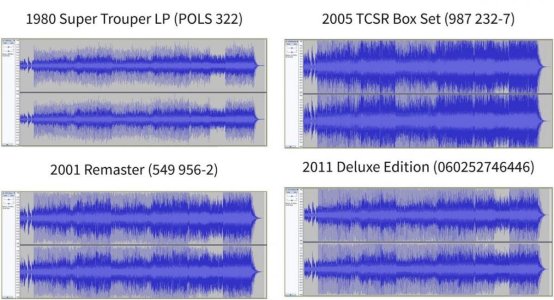Apparently
Source : https://www.headphonesty.com/2025/05/listening-digital-compressed-music-harm/
Hearing safety rules have long leaned on something called the “energy in equals energy out” hypothesis, or the idea that total sound energy (volume × time) drives risk. Turn up the volume, and you simply have to listen for less time.
That works fine for most noise, like machinery hum or the roaring traffic, because their levels scatter naturally in a bell-curve pattern. Regulators have even made special allowances when sounds stray from that curve, like with impulsive noises such as gunfire.
But dynamic-range compression breaks that rule by filling in every tiny pause. Instead of highs and lows, the levels cluster tightly around the average. This makes it more like a garden-hose at full blast than a stream trickling over rocks.

The real surprise came from the stapedius muscle reflex, A.K.A. your ear’s built-in volume guard. In the uncompressed group, reflex strength recovered fully by the next day. In the compressed group, it stayed stuck at about half strength for a full week.
Source : https://www.headphonesty.com/2025/05/listening-digital-compressed-music-harm/
Hearing safety rules have long leaned on something called the “energy in equals energy out” hypothesis, or the idea that total sound energy (volume × time) drives risk. Turn up the volume, and you simply have to listen for less time.
That works fine for most noise, like machinery hum or the roaring traffic, because their levels scatter naturally in a bell-curve pattern. Regulators have even made special allowances when sounds stray from that curve, like with impulsive noises such as gunfire.
But dynamic-range compression breaks that rule by filling in every tiny pause. Instead of highs and lows, the levels cluster tightly around the average. This makes it more like a garden-hose at full blast than a stream trickling over rocks.


